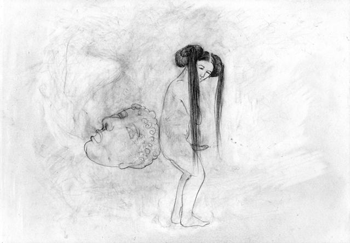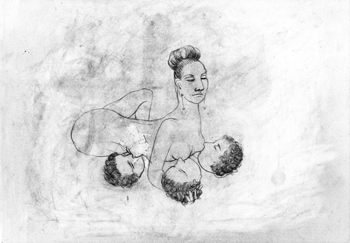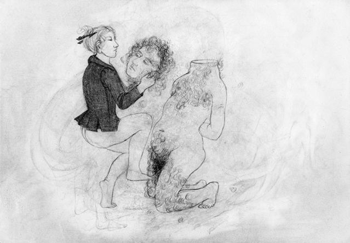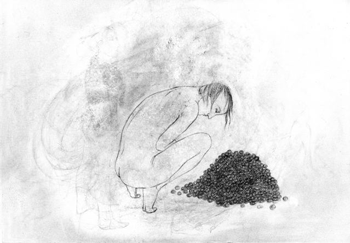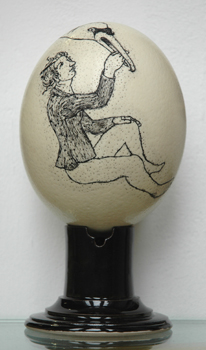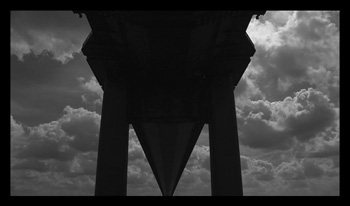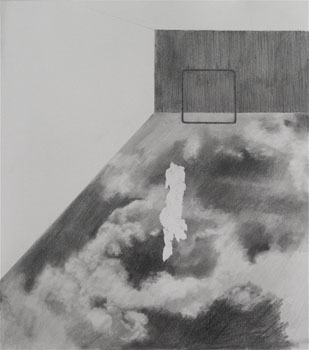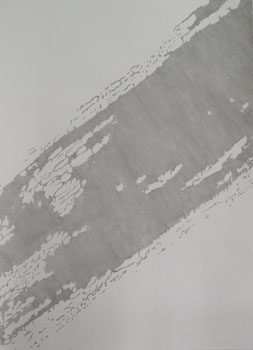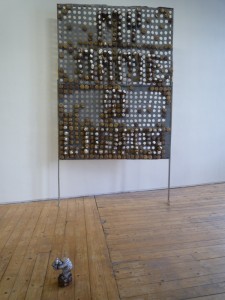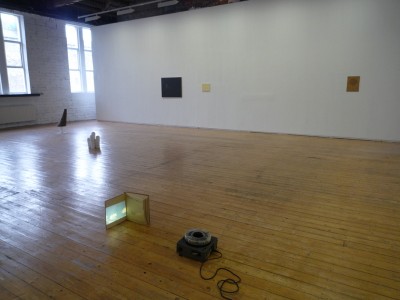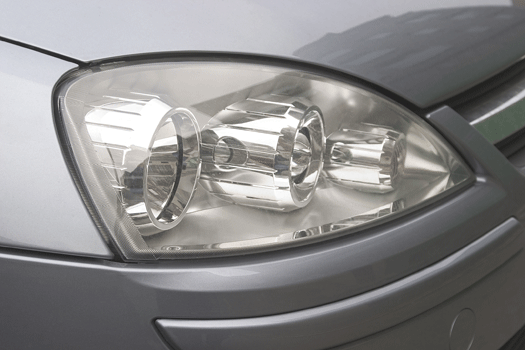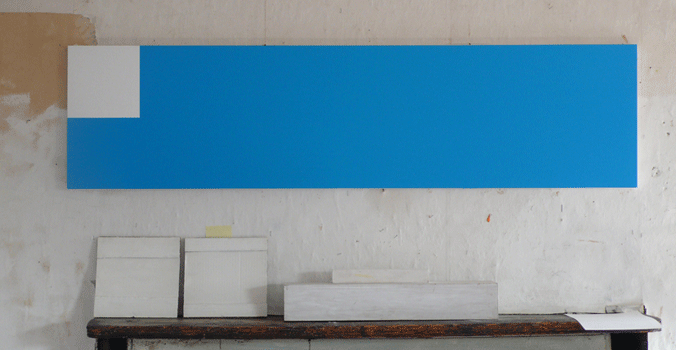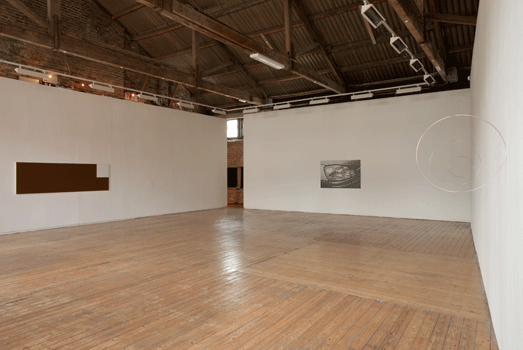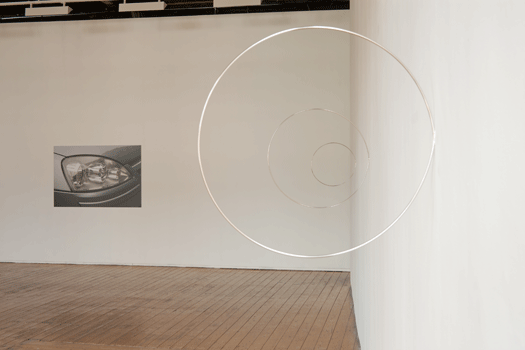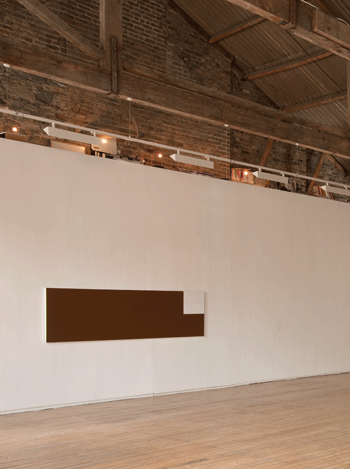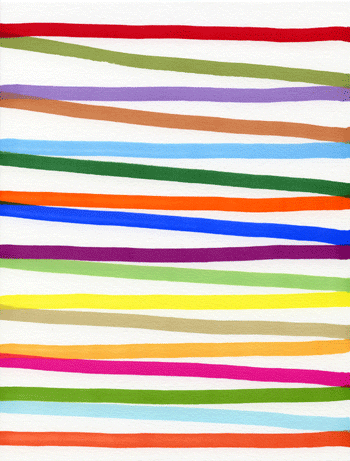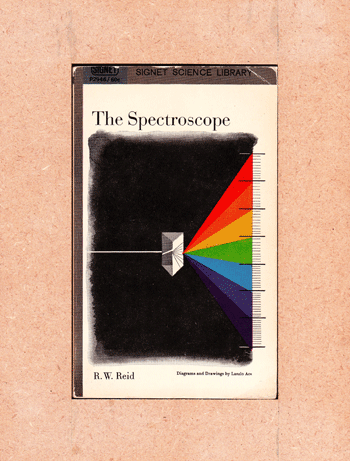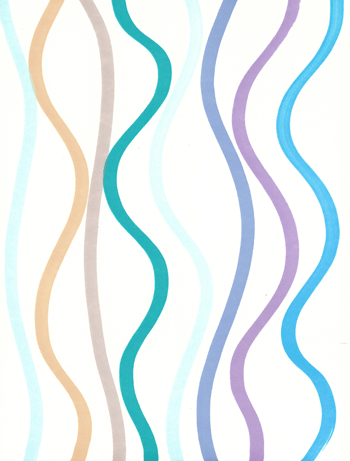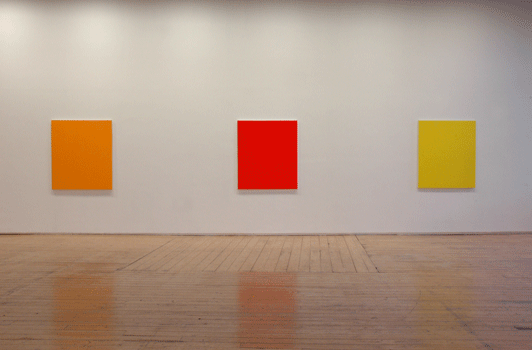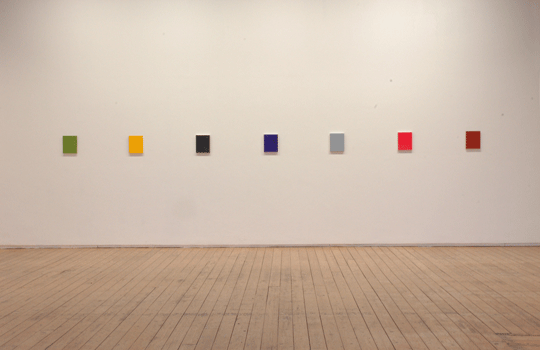Alice Maher: The Music of Things
For her solo exhibition at Green On Red Gallery in November/December, Alice Maher will show four new 'film-drawings', a new suite of limited edition prints called The Music of Things and two unique sculptural works. The works are a development of her Night Garden drawings shown at the RHA in 2007 and are an example of the artist's continuous quest to evolve her work through new languages and new materials. This is the first example of moving image in Maher's work. For the film-drawings she has worked with composer Trevor Knight to create a soundscape which is audible in parallel with the animated drawings, entwining itself in the unfolding narrative and subtly revealing the strange 'music of things'.
In these four new animated works Maher follows the metamorphosis of an image through many stages on one single sheet of paper, from the clean white page of the first drawing to the dirty messed up face of drawing number 276 where pencil marks have been applied and erased so many times that their ghost lines are an embedded part of the surface. The 'memory' of the drawings' making becomes an intrinsic element of its developing narrative.
Beginning with a sheet of A4 Hahnemuhle paper, Maher scanned each stage of the pencil drawing at 10 minute intervals preserving the images as documents in a computer. There is no 'actual' drawing, just the record of its many stages. When added together as an animated sequence the drawings form a peculiar imaginative narrative. It follows the twists and turns of the artist's decision-making process, becoming witness to the evolution of a series of images that never remains constant but grows and morphs with thought and time.
Animation, as we know it, is usually understood as the illustration of a story. In this case the narrative comes after the drawings are done, when all the images are lined up to form a sequence and a strange 'backward story' is revealed. It is the narrative of the artist's funny hybrid world. In this world people, animals and things co-exist, copulate and do combat for the contested space that is at once a simple small sheet of paper as well as the vast mytho-poetic universe.
The 7 intaglio prints are based on specific images taken from the thousand and one drawings that comprise the animated Music of Things. They come in a beautiful boxed set designed and printed by The Stoney Road Press in a limited edition of 25. Along with this we will be exhibiting two unique sculptural works, hand etched ostrich eggs.
For further information please contact Jerome or Mary at t.01 6713414 or at info@greenonredgallery.com

